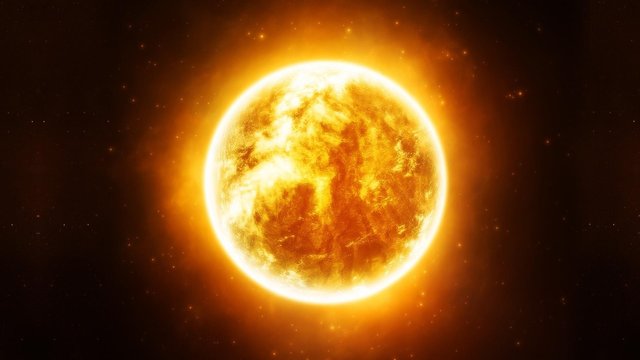Our Solar System - The Sun #4
Another billion years later, 100 degrees Celsius will be reached. At the age of 94 billion years at the latest, the hydrogen dries up in the sun's center and the engine shifts into a shell around the center, which moves further outwards over time.
Visibly not much will happen yet, only in the period of 11 to 11.7 billion years the burnt out core of helium begins to contract, because it has become too heavy and no longer resists radiation pressure, thereby the radius of the sun increases 23 to 25 times.
In the period from 11.7 to 12.3 billion years, a dramatically accelerated increase in luminosity and radius sets in. As the surface increases, the sun becomes more and more reddish. In the final phase, the radius will grow 166 times, which corresponds approximately to the radius of the orbit of the Venus seen from Earth. If the sun now occupies a large part of the sky and the earth's crust is melted into a lava ocean. The sun has become a red giant.
Due to the low gravitation on the surface of the sun, it repels more than a quarter of its mass because it can no longer hold itself. As a result, the gravitational pull on the planets also decreases and the orbital radii will increase. Because the core zones of the sun no longer produce energy, however, it continues to give in to gravity and contracts until finally the density has risen approximately to 10,000 times today's value.
Due to this contraction of the central region, the temperature there finally rises to several 100 million degrees, and helium then burns to carbon. When the helium in the center of the sun is consumed, the phase of helium shell burning begins. But at some point there will be nothing left to burn, what is left is a compact white dwarf of carbon and oxygen, about the size of the Earth. But a thimble full of white dwarf matter will weigh about half a ton to a ton.
There will still be so much heat stored in the core that it will take many millions of years to burn out. The combustion engine, however, will no longer get going. And because the dwarf radiates very strongly in the UV-light, it will excite the mass it has repelled to shine, as a planetary nebula.

 Part 3
Part 3 

 Part 5
Part 5 


I congratulate you @oendertuerk these very well documented, these post are excellent, happy day...
So there is no free will for stars ! everything is already determined ?
in a way it is so @chrisaiki :)